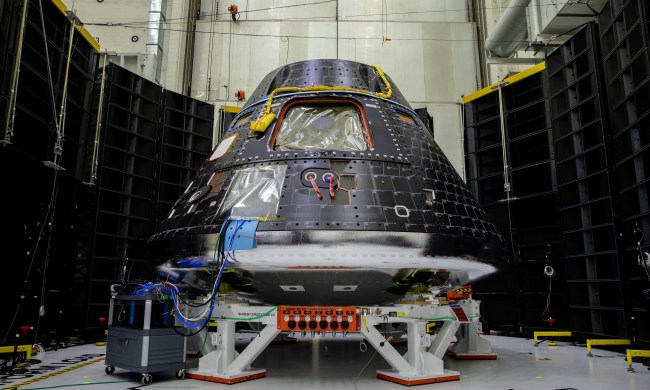NASA has shared some incredible footage showing Earth rising behind the moon.
It was captured on November 28 as Orion orbited our nearest neighbor during the Artemis I test mission, which saw the first flight of NASA’s next-generation Space Launch System (SLS) rocket.
On Nov. 28, our Orion spacecraft captured the Earth rising behind the Moon.
The #Artemis I flight test happened around 50 years after the iconic Apollo 17 "Blue Marble" photo of Earth was taken. See the similarities and differences between the two eras: https://t.co/lEllEjjRkv pic.twitter.com/lM1W3BH2mR
— NASA (@NASA) December 24, 2022
Asked in the comments why the two celestial bodies appear to wobble in the footage, NASA explained: “The slight wobble is because the camera was in a fixed position on the spacecraft’s solar array while the moon and Earth continued to move in their orbits relative to Orion,” adding that the footage plays at 900 times the original speed.
Another commenter incorporated some stabilization into the footage before sharing it.
Also on Christmas Day, NASA’s History Office shared the iconic “Earthrise” shot captured exactly 54 years earlier during the Apollo 8 mission in 1968.
"We came all this way to explore the Moon, and the most important thing is that we discovered the Earth" –Bill Anders, Apollo 8 astronaut
"Earthrise," one of the most powerful photos in @NASA’s history, was taken by Anders #OTD in 1968 as the Apollo 8 crew orbited the Moon. pic.twitter.com/uqORVUyVZf
— NASA History Office (@NASAhistory) December 24, 2022
The uncrewed Artemis I mission got underway on November 16 and ended with the Orion splashing down off the California coast on December 11.
During its time in space, Orion came within just 80 miles of the lunar surface before entering an orbit that took it 268,553 miles from Earth, a point further than any astronaut-rated spacecraft has ever traveled from our own planet.
In just a few years from now, astronauts will fly aboard the Orion spacecraft in the Artemis II mission, which will follow the same path as the Artemis I flight.
After that, in a mission that could take place as early as 2025, NASA will use the Orion in the Artemis III mission that will endeavor to put the first woman and first person of color on the surface of the moon. In subsequent voyages, NASA is planning to build a moon base where astronauts can spend extended periods exploring the lunar surface. Looking further ahead, it wants to use the moon as a stepping stone for the first crewed mission to Mars in the 2030s.
Want to see the 25-day Artemis I mission squeezed into just 60 seconds? Digital Trends has you covered.


